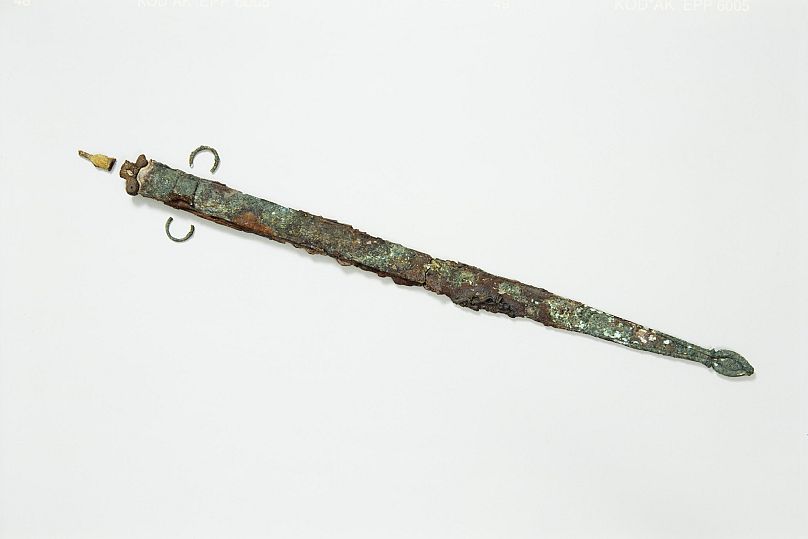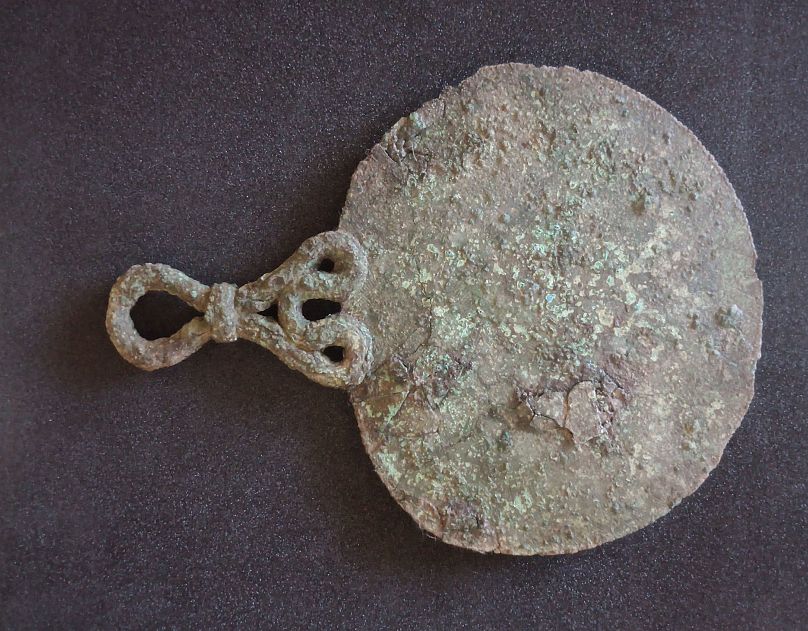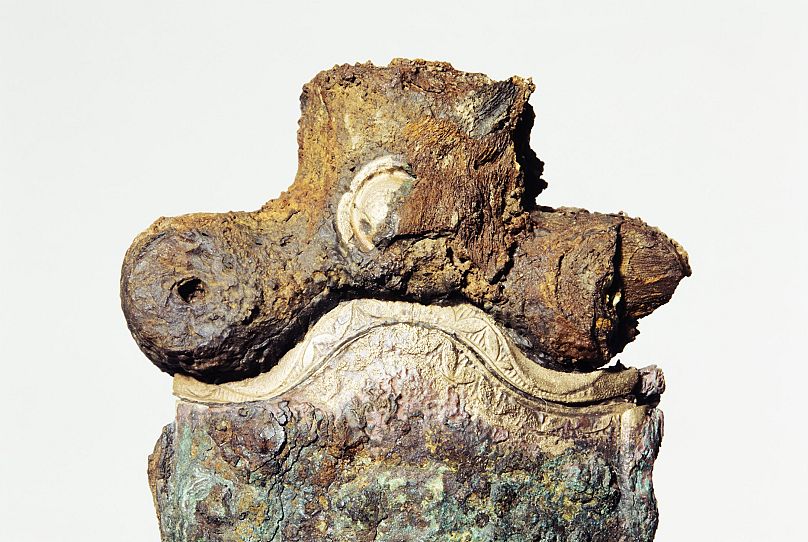A decades-long mystery regarding the gender of a warrior buried 2,000-years-ago on the Isles of Scilly - an archipelago off the Cornish coast, in southwest England - has finally been solved.
In a groundbreaking study led by Historic England, a decades-long mystery surrounding a 2,000-year-old burial on the Isles of Scilly has been unraveled.
A burial site discovered on the picturesque island of Bryher in 1999, had puzzled archaeologists for decades due to its unique contents - both a mirror and a sword were found alongside the human remains.
Typically, swords were associated with male burials and mirrors with female ones during the same period in Iron Age western Europe.
But this grave contained both...
The breakthrough in solving this enigma owes itself to cutting-edge scientific advancements, most notably a sophisticated technique developed by experts at the University of California at Davis, which ultimately points to a compelling answer - the buried individual was likely a woman.
A unique burial that defies gender norms
The Historic England team turned to tooth enamel, the toughest and most resilient substance in the human body, which carries proteins with links to either the X or Y chromosome.
By extracting traces of these proteins from minuscule pieces of surviving tooth enamel, the researchers calculated a remarkable 96% probability that the buried individual was female.
The strength of this result, despite the degraded state of the bones, opens doors to further exploration of other badly deteriorated burials.
Professor Glendon Parker, a renowned Environmental Toxicologist from the University of California at Davis, expressed the groundbreaking nature of the findings, hinting at the potential revelations concealed in other archaeological sites.
"Given the degraded state of the bones, it’s remarkable to get such a strong result. It makes you wonder what could be discovered by re-visiting other badly degraded burials," says Professor Glendon Parker, an Environmental Toxicologist from the University of California, Davis.
The significance of this new revelation
Apart from settling the long-standing debate surrounding the burial's occupant, this discovery provides a rare glimpse into the role of women in Iron Age Britain, a time marked by inter-community conflicts and warfare.
During this era, warfare primarily consisted of surprise raids on enemy settlements, and the grave's contents offer valuable clues about the individual's possible involvement in such activities.
Mirrors, besides their practical applications, were imbued with symbolic significance, serving as tools for signalling and communication during attacks. They also held ritualistic importance, allowing communication with the supernatural realm to ensure raiding success or to purify returning warriors.
Dr. Sarah Stark, a Human Skeletal Biologist at Historic England, emphasises the significance of the burial's contents in understanding the female warrior's role during the Iron Age.
"Although we can never know completely about the symbolism of objects found in graves, the combination of a sword and a mirror suggests this woman had high status within her community and may have played a commanding role in local warfare, organising or leading raids on rival groups," she says.
Stark adds, "This could suggest that female involvement in raiding and other types of violence was more common in Iron Age society than we’ve previously thought, and it could have laid the foundations from which leaders like Boudicca would later emerge."
The sword and mirror unearthed from the Bryher burial site are on display at the Isles of Scilly Museum.















